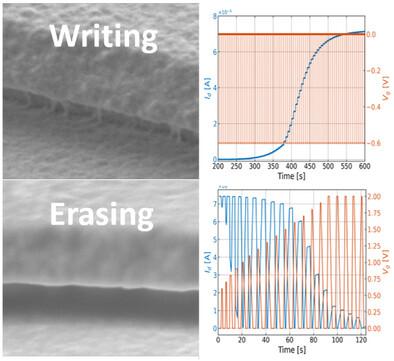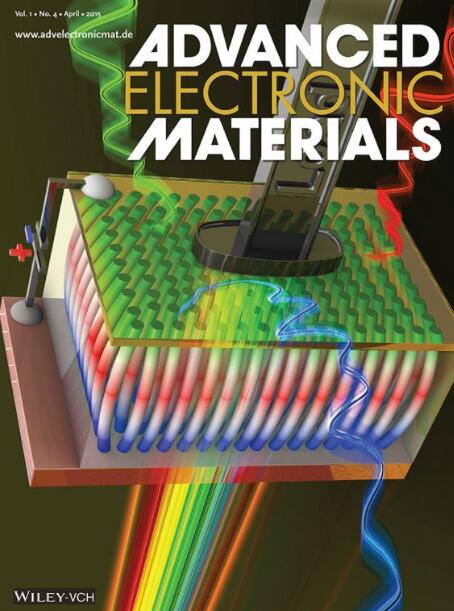Electropolymerized PEDOT:PSS-Based Memtransistors for Neuromorphic Computing
IF 5.3
2区 材料科学
Q2 MATERIALS SCIENCE, MULTIDISCIPLINARY
引用次数: 0
Abstract
Organic electrochemical transistors (OECT) have been reckoned as promising candidates for neuromorphic computing thanks to their low power consumption, small footprint, access to a multitude of memory levels and superior spatio-temporal dynamics. However, the acquisition of non-volatile memory levels has not been straightforward, as some works require the use of auxiliary components such as resistors, preparation of composite channel materials, or surface treatments on substrates to obtain stable and reproducible results. Aiming to simplify the access to these levels in these devices, a poly(3,4-ethylenedioxythiophene) poly(styrenesulfonate) (PEDOT:PSS) electropolymerization process is implemented here to controllably deposit conducting fibers in channels of vertical OECTs. By varying the pulse time, not only the number of memory levels is tuned, but also the onset of the first memory level shift. During writing, energy expenditure per switching event is estimated to be on the nJ scale, with clear potential for further reduction. In addition, erasing of memory levels is as well demonstrated by the application of a train of pulses with increasing voltage. The advancements here presented in reproducibility of writing and erasing non-volatile memory levels in OECTs as well as the simple device structure will enable further implementation of neuromorphic hardware in the future.

电聚合PEDOT:用于神经形态计算的基于pss的mem晶体管
有机电化学晶体管(OECT)由于其低功耗、占地面积小、可访问多种存储级别和优越的时空动态特性而被认为是神经形态计算的有前途的候选者。然而,获取非易失性存储器电平并不简单,因为一些工作需要使用辅助元件,如电阻器,制备复合通道材料,或在衬底上进行表面处理,以获得稳定和可重复的结果。为了简化这些器件中对这些级别的访问,在这里实施了聚(3,4-乙烯二氧噻吩)聚苯乙烯磺酸盐(PEDOT:PSS)电聚合工艺,以可控地将导电纤维沉积在垂直oect的通道中。通过改变脉冲时间,不仅可以调整内存电平的数量,还可以调整第一个内存电平移位的开始时间。在写入过程中,每次开关事件的能量消耗估计为nJ级,具有进一步降低的明显潜力。此外,通过应用一串电压增加的脉冲,也证明了存储器电平的擦除。本文提出的在oect中写入和擦除非易失性存储器级别的再现性以及简单的器件结构方面的进步将使未来进一步实现神经形态硬件。
本文章由计算机程序翻译,如有差异,请以英文原文为准。
求助全文
约1分钟内获得全文
求助全文
来源期刊

Advanced Electronic Materials
NANOSCIENCE & NANOTECHNOLOGYMATERIALS SCIE-MATERIALS SCIENCE, MULTIDISCIPLINARY
CiteScore
11.00
自引率
3.20%
发文量
433
期刊介绍:
Advanced Electronic Materials is an interdisciplinary forum for peer-reviewed, high-quality, high-impact research in the fields of materials science, physics, and engineering of electronic and magnetic materials. It includes research on physics and physical properties of electronic and magnetic materials, spintronics, electronics, device physics and engineering, micro- and nano-electromechanical systems, and organic electronics, in addition to fundamental research.
 求助内容:
求助内容: 应助结果提醒方式:
应助结果提醒方式:


